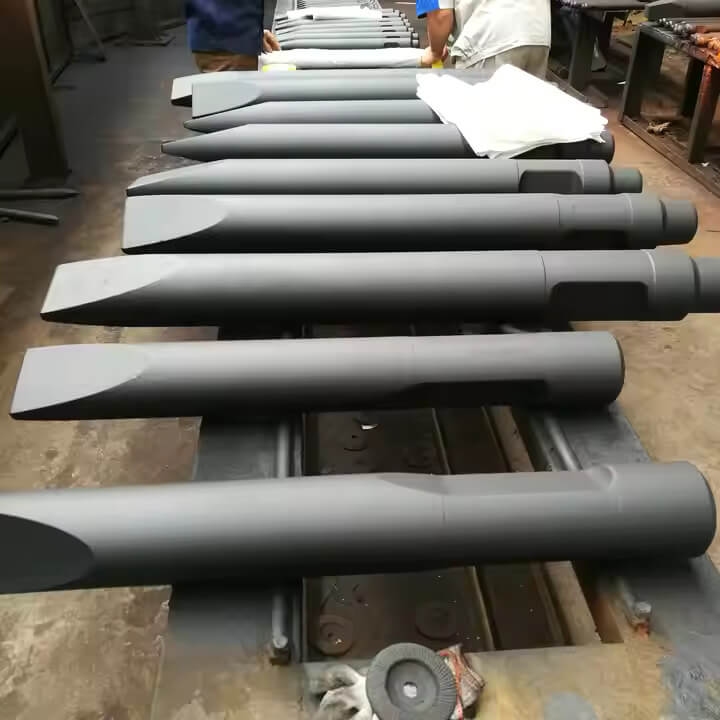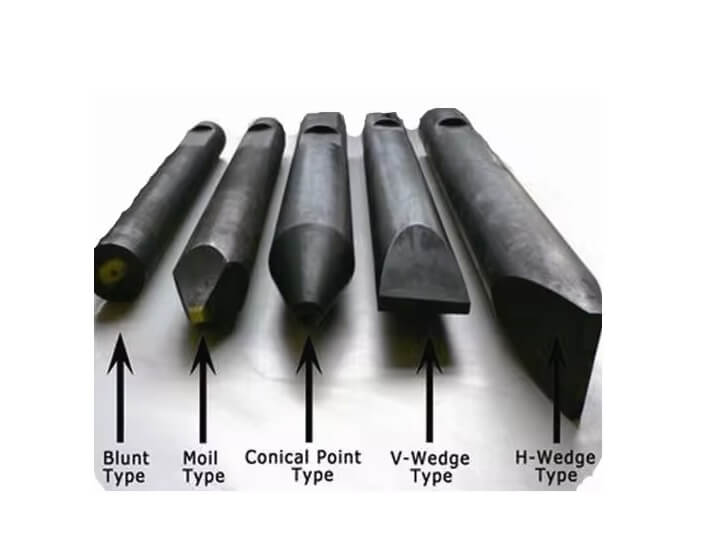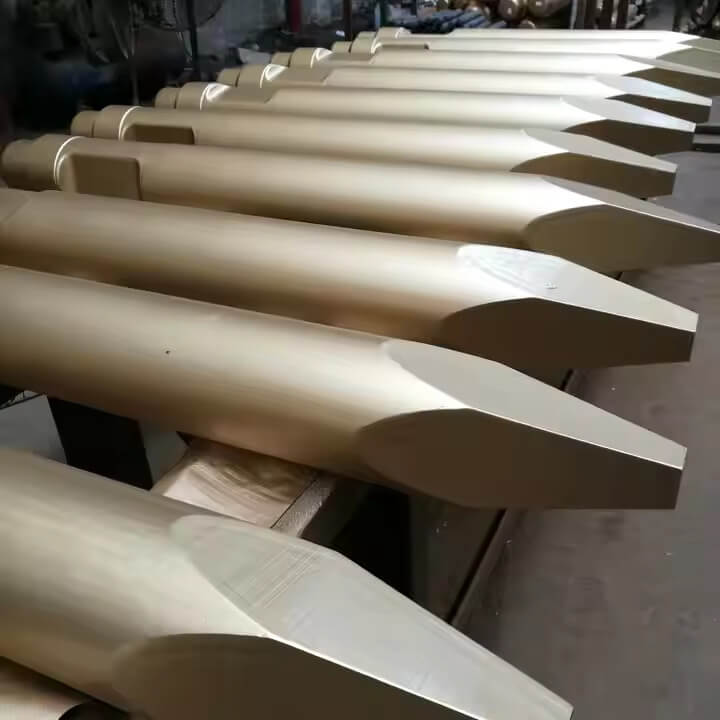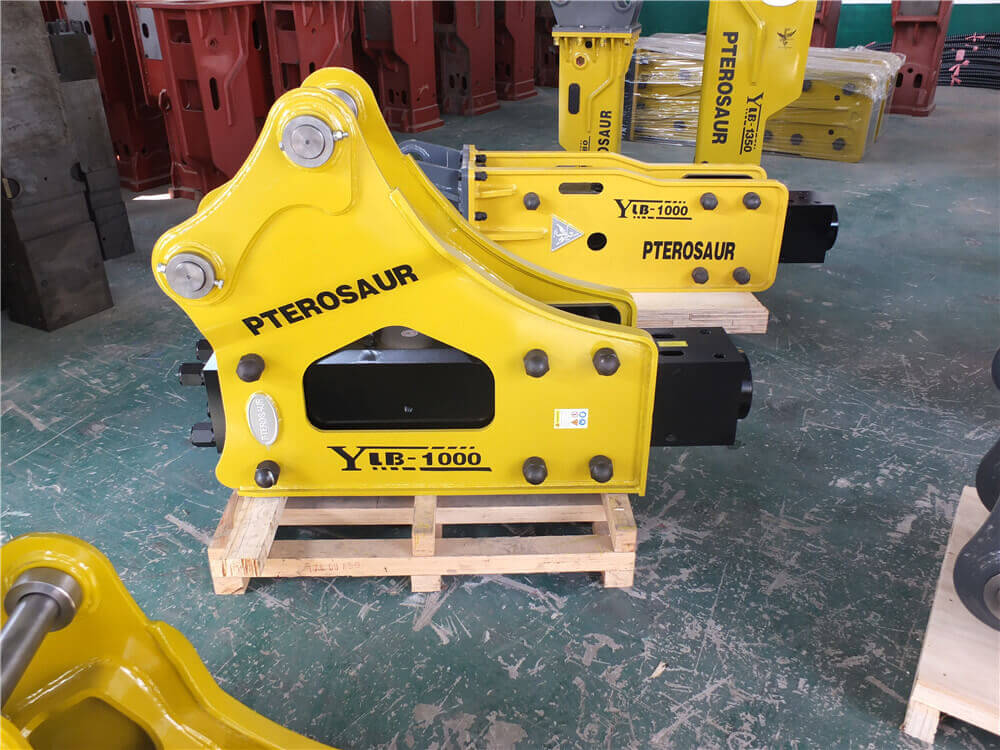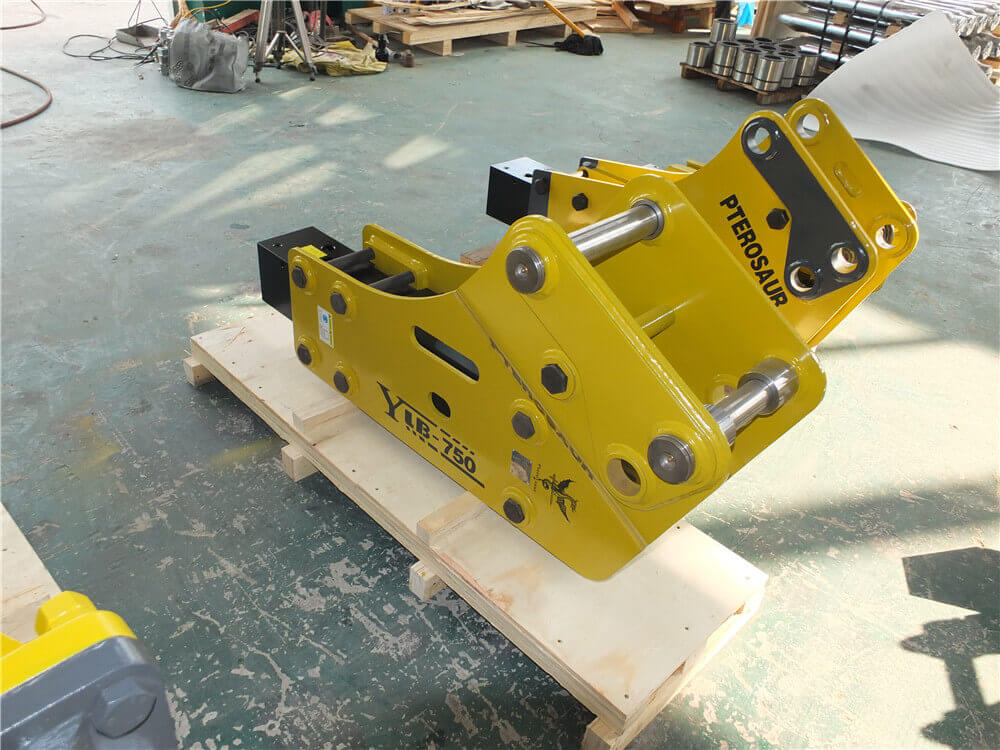Material: 40CrMo, 42CrMo
Chisel Diameter: 45-210 mm
Chisel Types: Moil Point, Blunt Tool, Flat, Wedge
Processing: Advanced Heat Treatment, Anti-Wear
Certification: CE & ISO
Overview
Choosing the right size of breaker chisel is essential for optimizing an excavator’s performance across different applications. Each chisel size is tailored for specific tasks, making it crucial for construction professionals to understand the specifications, advantages, and ideal use cases. This guide delves into the standard sizes available, benefits of each, common application scenarios, and answers to frequently asked questions to aid in selecting the optimal breaker chisel size.
Key Breaker Chisel Sizes and Specifications
| Chisel Size (mm) | Compatible Excavator Weight (tons) | Primary Applications | Length (mm) | Diameter (mm) | Material Hardness (HRC) |
|---|---|---|---|---|---|
| 50 – 80 | 1 – 2 | Light concrete breaking | 300 – 500 | 50 – 80 | 45 – 50 |
| 80 – 100 | 2 – 4 | Surface demolition, small rocks | 500 – 700 | 80 – 100 | 50 – 55 |
| 100 – 120 | 4 – 6 | Concrete, foundation work | 700 – 900 | 100 – 120 | 52 – 58 |
| 120 – 150 | 6 – 10 | Hard rock and larger concrete | 900 – 1200 | 120 – 150 | 55 – 60 |
| 150+ | 10+ | Heavy-duty rock breaking, mining | 1200+ | 150+ | 55 – 65 |
Note: Specifications vary by manufacturer. For precise data, please contact us directly.
Advantages of Different Chisel Sizes
- 50-80 mm
- Best for light concrete or surface material removal.
- Designed for small excavators (1-2 tons), providing flexibility and control in confined spaces.
- 80-100 mm
- Optimal for surface demolition and smaller rocks.
- Ideal for excavators between 2-4 tons, balancing power and ease of maneuverability for medium tasks.
- 100-120 mm
- Versatile size for breaking concrete slabs and handling foundation tasks.
- Suitable for 4-6 ton machines, offering increased power for deeper, more intensive jobs.
- 120-150 mm
- Designed for hard rock and larger concrete structures.
- Fits excavators in the 6-10 ton range, providing robust force for challenging materials.
- 150+ mm
- Tailored for heavy-duty work such as mining and breaking very dense materials.
- Compatible with excavators above 10 tons, these chisels deliver the highest impact force.
Application Scenarios
- Urban Construction: Smaller chisels (50-80 mm) are well-suited for urban environments where precision is key, especially in residential or commercial construction zones.
- Foundation and Trenching: Mid-sized chisels (100-120 mm) are excellent for foundational work, capable of breaking through concrete slabs efficiently while maintaining precision in controlled demolition.
- Mining and Quarrying: Heavy-duty chisels (150+ mm) are preferred in mining environments, where breaking large, dense rock formations is essential. These chisels maximize force to streamline operations.
Customer Feedback
Kevin L., Construction Manager
“The 100-120 mm chisel has been a great addition to our 5-ton digger. It’s the perfect balance for our foundation work and handles concrete effortlessly.”
Sarah J., Quarry Operator
“We switched to 150 mm chisels for our mining site, and the difference is incredible. These can break even the hardest rocks, and they last longer under intense conditions.”
Alex M., Demolition Foreman
“Using 80 mm chisels for surface work has saved us a lot of time on smaller tasks. The control and efficiency with this size on a compact digger are impressive.”
Frequently Asked Questions (FAQ)
1. How do I select the right breaker chisel size for my excavator?
Match the chisel size to your excavator’s weight class and the material type. Heavier machines benefit from larger chisels for increased force, while smaller machines are suited to lighter chisels for precise control.
2. What is the expected lifespan of a chisel?
Chisel lifespan depends on factors like usage frequency, material hardness, and maintenance. Routine inspections can help detect early wear and prolong chisel life.
3. Are larger chisels more durable?
Durability is not solely dependent on size; it also involves the material quality and hardness rating. However, larger chisels often have enhanced durability for heavy-duty applications.
4. Can chisel size affect fuel consumption?
Yes, using a larger chisel than necessary can increase fuel consumption. Choose a chisel size optimized for the job to maximize fuel efficiency.
Conclusion
Choosing the right breaker chisel size can greatly impact your equipment’s performance, efficiency, and operational costs. With options suited to a range of tasks from light demolition to heavy rock breaking, understanding the specifications and advantages of each size is crucial. For tailored advice on selecting the ideal chisel size for your project or machinery, please reach out to our team.

